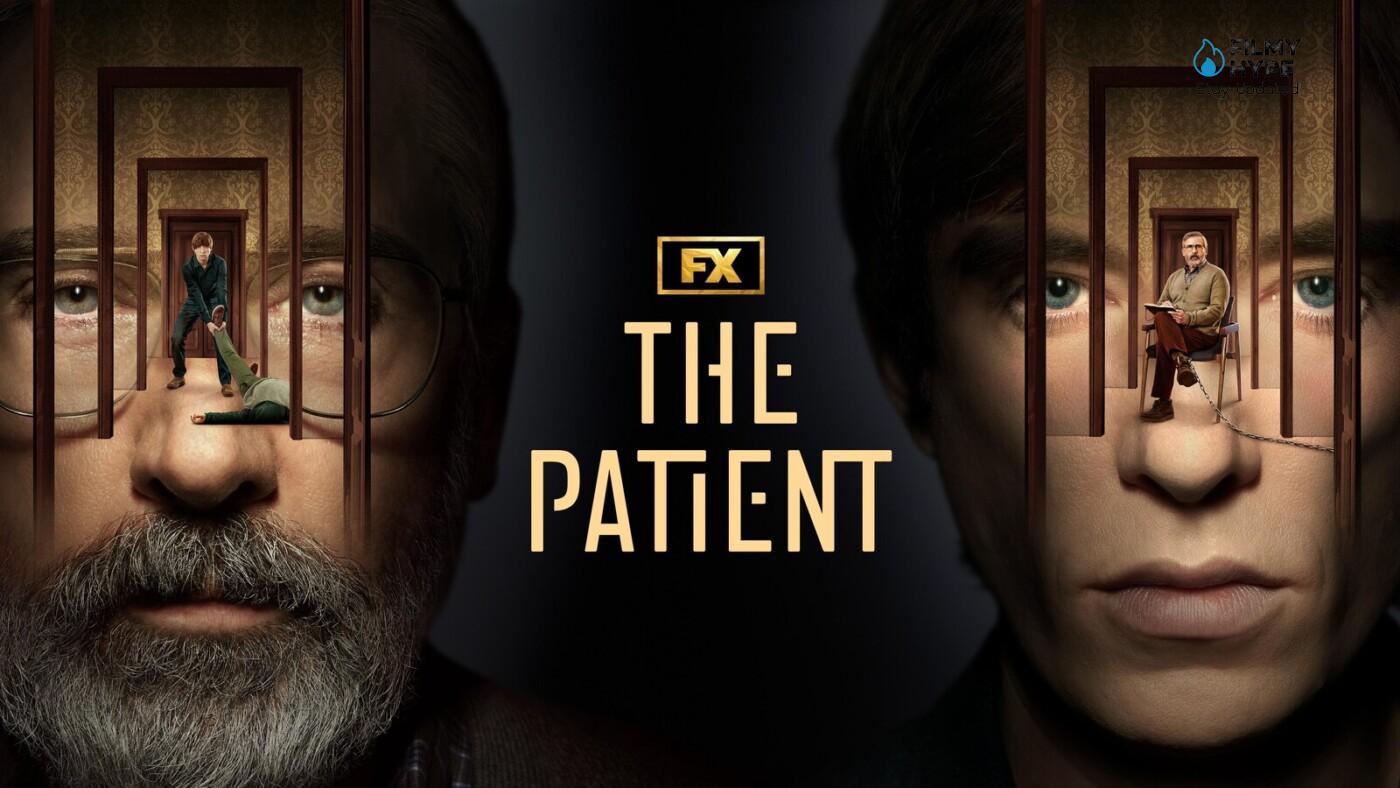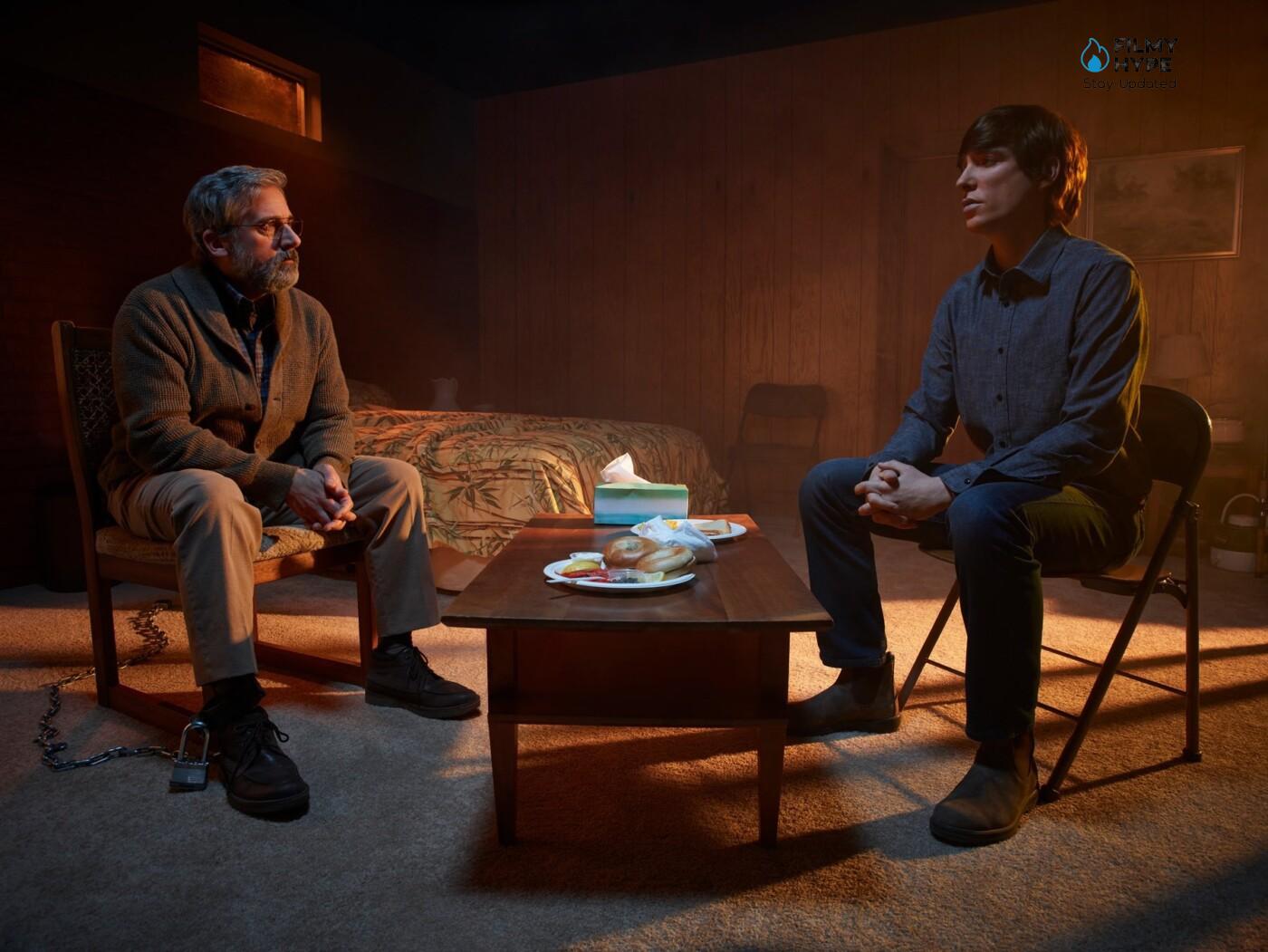The Patient Review: The Typical Elements of Crime Mixed With A New Point Of View
Cast: Steve Carell, Domhnall Gleeson, Linda Emond, Andrew Leeds, Laura Niemi, David Alan Grier, Alex Rich
Creators: Joel Fields and Joe Weisberg
Streaming Platform: Fx and Disney+
Filmyhype.com Ratings: 4/5 (four stars) [yasr_overall_rating size=”large”]
The Patient could seem like, yet another TV series centered on the story of a serial killer released in one of the most prosperous years for true crime. But it is enough to watch even just the first episode to understand that you are watching something different. Born from the mind of Joel Fields and Joe Weisberg, who are also the screenwriters of the ten episodes, The Patient is a psychological thriller series that in a short playing time (most of the episodes last just twenty minutes each) manages to create a story chilling and introspective.

From the same authors of the award-winning series The Americans, Joe Wiseberg and Joel Fields, the ten-episode FX series The Patient arrives on Disney+ in other countries. Accustomed to the epic scope of last season’s shows (Lord of The Rings: The Rings of Power and House of the Dragon above all), this new serial escapes the visual majesty and legendary frame to stage a story of psychological tension that identifies in its two protagonists, and in the minimalist setting stripped of all frills, the power of a story that becomes vertical drama. So, let’s try to analyze together some of the most interesting aspects of this new black pearl (available on the Disney+ platform) in our review of The Patient.
The Patient Review: The Story
It’s been a while since I’ve come across a drama series that wasn’t based on a true story or a book inspired by a true story. The initial idea is as simple as it is seductive: Alan Strauss (Steve Carell), a therapist afflicted by the untimely death of his wife and the progressive deterioration of his relationship with his son, is kidnapped by one of his former patients, the young Sam Fortner (Domhnall Gleeson). Waking up in a basement room with a large glass door that opens onto a landscape of open (and isolated) countryside, Dr. Strauss has a chain on his foot that allows him a range of action a few steps from the bed. He soon discovers that his old patient is holding him hostage, convinced that he can use him to appease his compulsion to kill.
Reasonable attempts to make the young person understand how much the requisites for the successful outcome of therapy cannot be separated from a relationship of mutual trust and a setting perceived as “safe” by both participants are of little use. Fortner understands, but “he has no choice,” because the doctor represents his last chance at a normal life. And so Strauss also finds himself having no choice, and having to adapt to the situation to survive; on one condition, however: that the boy undertakes not to commit any murder during the course of forced therapy. Thus begins a paradoxical game that develops on two tracks: the one that has as its objective physical survival, for Strauss, and self-survival, for Fortner. Both players, both injured victims.
It is a drama that renounces the multiplicity of settings and spaces in favor of a vertical development: however, if we are denied true access to the mind of the serial killer, and we are forced to interpret and predict his reactions based on the phenomenology of his behavior and of what he says, the doctor’s mind opens up and introduces us both in his present moment and his experience, putting in our hands the access key to the life of a broken and resigned man. What emerges through the numerous flashbacks is a powerful background and refined writing, which episode after episode makes up a solid and three-dimensional mosaic of Alan Strauss’s personality.
The Patient Review and Analysis
If on the one hand what we know about the traumas linked to the serial killer’s past remains confined to a deliberately evasive oral narration (despite repeated requests for details we can only know that he was the victim of a violent and abusive father), building a mask waterproof in which we only glimpse glimpses of that flame of human empathy that Strauss tries to contact and go to solicit, the inner conflicts of the doctor are shown to us in the form of flashbacks of the past. We, therefore, learn that, in addition to the recent death of his wife due to illness, the great draining and unresolved conflict concerns the son who, after converting to orthodox Judaism, gradually moved away from the family, which was never able to accept the rigidity of the norms embraced by the son.
The ghosts of the unresolved conflict, the theme of incommunicability and silenced anger that turns into frustration, therefore reappear in the relationship between doctor/hostage and patient/tortor, drawing a complexity that finds full expression in the measured and millimetric interpretation of a Steve Carell who as never before manages to render all the nuances of an inner struggle between resignation and survival instinct, between physical tiredness and animalistic momentum. We are allowed to fully empathize with him, to counterbalance (our) frustration in never being able to focus on the figure of Sam Fortner.
That of the authors Joel Fields and Joe Weisberg is a stylistic choice that aims to condense the power of expressed and repressed emotions within a limited space, albeit not exactly claustrophobic. One of the four walls is made up of a large glass door, a door as close as it is unreachable and from which Fortner returns every evening, after having carried out his work as an inspector in the restaurant sector, holding a bag of ethnic food in his hand: an expedient that allows the two to sit facing each other and thus continue the therapy.
An intimate staging which on the one hand recalls that of a theatrical play, on the other makes one think of what, in serial language, are called bottle episodes. A bare-bones cast and a pre-arranged set, in which the dynamism of the narrative is entrusted almost exclusively to relational dynamics and actor performances. Perhaps this is also why the authors have opted for an unusual format for a psychological thriller, building episodes with limited playing time (for the most part, we are about twenty minutes) which always end with a cliffhanger, thus helping to revive a trend that, especially in the first episodes, would risk suffering from a certain stagnation.

If Steve Carell has nothing left to prove on the comic front, here the actor has his definitive consecration on the dramatic one. We had already seen and widely appreciated in The Morning Show, where, however, he shone with an equally brilliant cast. Here, however, he finally seems to confirm the maxim according to which if an actor is a great comedian there is an excellent chance that he is equally a great dramatic performer. Through the painstaking construction of a character who is a supernova of compressed emotionality, Carell manages to fully restore the difficulty of the inner conflict that stirs behind a painstakingly maintained facade in front of his kidnapper.
On the other side of the session, Domhnall Gleeson effectively conveys the constant tension of his character, forced to live in the profound discomfort of being himself, deprived of any form of elementary empathetic language but desperately resolved to get help, demanding the impossible, claiming to contravene the pillars on which the science of listening is based because the urge to be other than himself is as pressing as his compulsion to kill. Unfortunately for him, and all of us, psychotherapy is not magic, and what we desire cannot always come true in the times and ways we dictate.
The introspection and the psychological aspect are revealed in the aesthetics and in the direction, both cured and balanced to build a narrative tension that becomes palpable episode after episode. Though Alan is chained to the floor of a spacious, half-empty room, claustrophobia is the feeling one gets when watching The Patient. The feeling of anguish becomes even more overwhelming when Alan’s mind begins to dissociate, leading him to hide in memories of himself and fictitious therapy with his old psychologist.
Between the two protagonists, the imbalance of power is built on some behaviors of Sam which may seem only details in such a situation, but which place Alan in a continuous condition of subordination. As is talking over Alan even when he is saying important things, begging for his life, or like the fixed bathroom appointments next to the room, with a thin wall separating the two and unable to suppress the noises, making Alan uncomfortable. The Patient is a series between crime and thriller in which suspense makes room for an emotional discomfort that is difficult to find in other serial killer series.
The Patient Review: The Last Words
The Patient is a thriller that intrigues an initial idea that is as simple as it is tantalizing. Taking advantage of a staging reminiscent of a play, the drama of the therapist kidnapped by his former patient develops vertically, revealing a wealth of psychological themes and contents masterfully brought to the screen by an exceptional Steve Carell in every shot. Steve Carell and Domhnall Gleeson confront each other in a two-character miniseries set in one place, in which a killer seeks help from a therapist to stop killing. A confrontation with a calm yet tense atmosphere for a miniseries that can only intrigue the viewer.




